Solar panel cell efficiency is constantly growing. As of late 2022, the most efficient panels demonstrated a tremendous 25.5% efficiency during lab tests. Meanwhile, residential solar panels show productivity from 16% to 22%. Those are still great numbers. But if you decide to neglect proper maintenance, you may see halved results.
Check out this article if you are interested in proper solar energy management. Here, we’ll share tips about solar monitoring and maximizing system performance. You’ll find out what steps you need to perform and how to properly utilize monitoring tools.
The Importance Of Solar Monitoring
The constant monitoring allows you to identify potential problems early. Modern systems detect even the slightest performance drops due to equipment malfunctions or shading. It eases preventative maintenance, where you can address problems beforehand, preventing damage and saving money in the long run.
Solar monitoring tools allow you to maximize energy production and pinpoint potentially damaged components that negatively affect your system. If your inverter allows you to change its settings, solar monitor platforms will enable you to fine-tune it to achieve maximum productivity.
Knowing your system works at its best provides peace of mind. You will also see a better return on investment. Due to the maximum possible efficiency, your panels will pay themselves off faster than expected.
Set Up Monitoring Tools
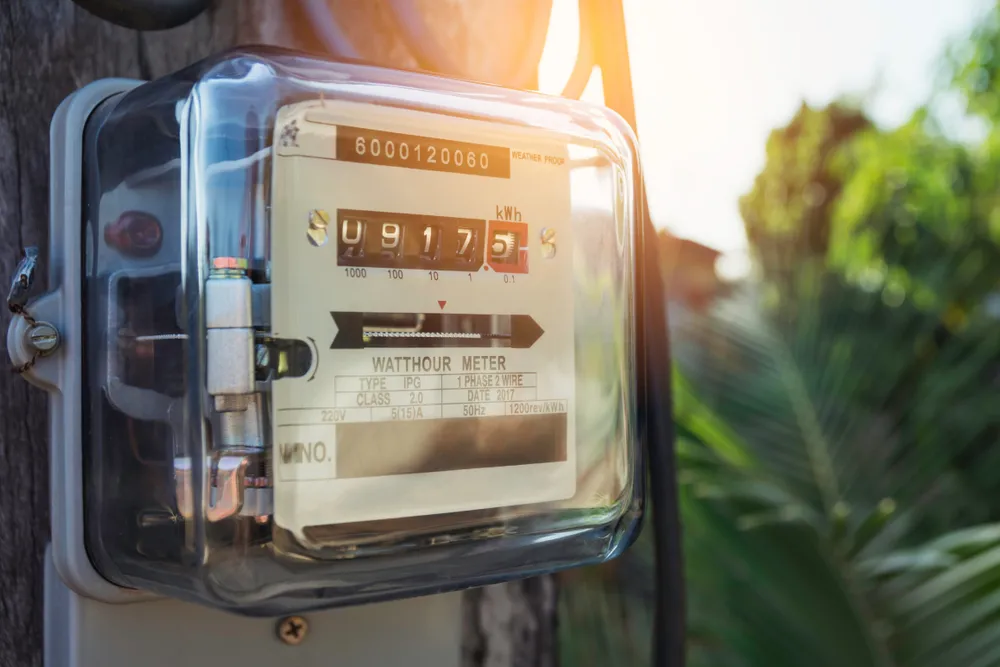
It’s the first and foremost step of your monitoring journey. There are two types of performance monitoring systems: basic and advanced. Let’s examine each in detail.
The basic green power monitoring system will show you a quick overview of the system’s health. It consists of:
- Inverter display. Most inverters have a built-in display showing basic data like current power generation (in watts) and overall system status.
- Utility meter. This device tracks the electricity flowing into and out of your home. With it, you can monitor estimates of generated electricity (production minus consumption fed back to the grid).
The basic system doesn’t have any software to store and analyze data. You need to enter measurements manually into your preferred spreadsheet or note app. However, usually, you don’t need to pay additionally for those devices, as they already come with your system.
An advanced PV monitoring system offers in-depth data reviews, including issue identification. Some of them provide even remote access to the system with mobile apps. The solar panel monitoring system consists of software and hardware components such as:
- Solar panel monitoring kits. It’s hardware that connects to your system and transmits measurements to the online platform. It provides granular data, such as string-level monitoring (performance of individual panel sections), environmental data (temperature, sunlight exposure), etc.
- Online monitoring platforms. This software collects and visualizes data, providing insights and warning you about potential issues.
When you choose a solar energy monitoring system, consider its data granularity, compatibility with your system, and preferred budget. Advanced tools are often more expensive, but they can provide in-depth performance analysis.
However, before purchasing any tool, ensure it is compatible with your panels, batteries, and inverter. You can ask your solar installer team to take care of it. Reputable teams usually help you find and install monitoring systems of any complexity.
Gather and Track Data
If you choose basic solar monitoring tools, you’ll need to track data manually. Collect this information using your preferred spreadsheet service, such as Microsoft Excel, Google Sheets, or Notion. We recommend using data visualization tools to convert raw data into charts. It makes it easier to see electricity usage patterns and track the system’s production.
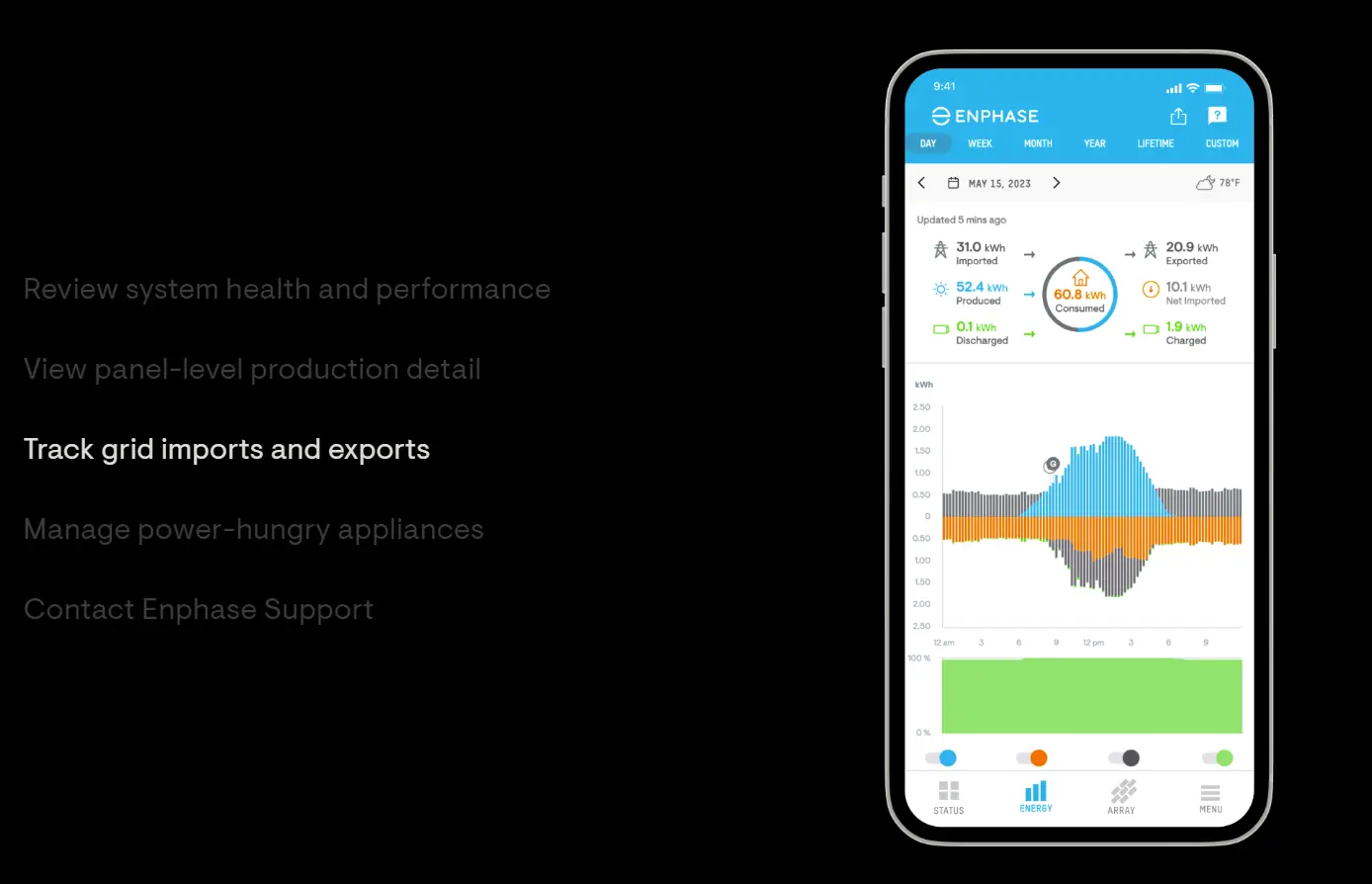
Source: Enphase
Advanced solar energy monitoring platforms typically collect data autonomously and provide custom reports in their mobile apps. Choose a service that suits your needs and energy consumption habits. Residential users don’t need enterprise services designed to track thousands of systems simultaneously. Take your time to research tools that perfectly fit your requirements.
Conduct Regular System Inspections
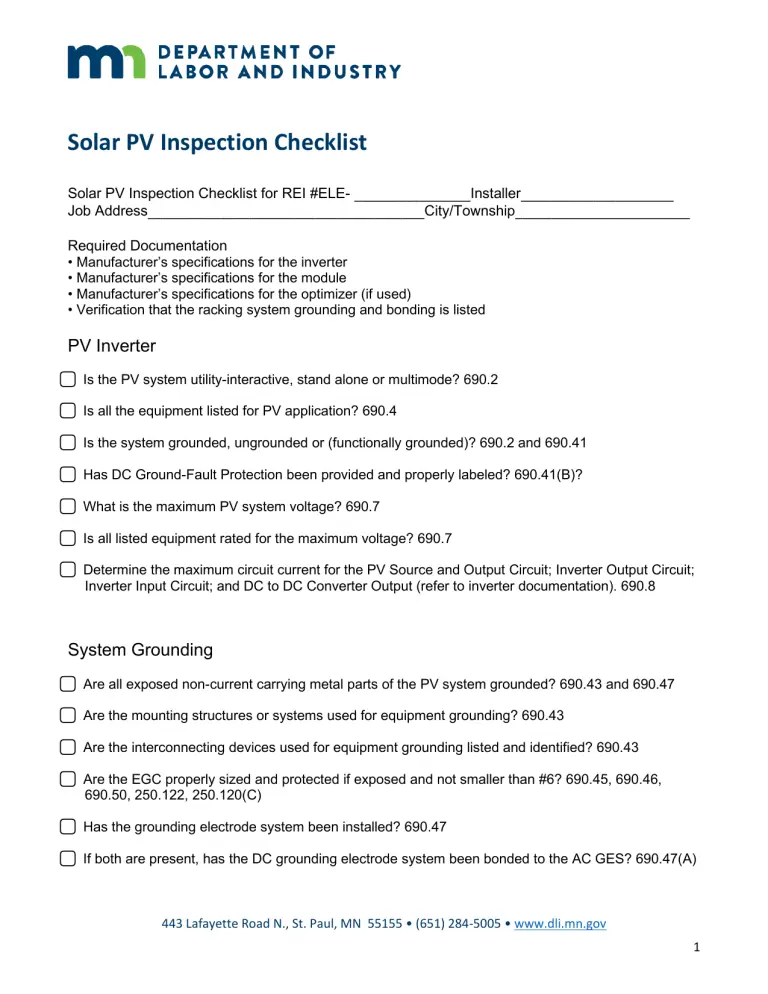
Source: Studylib
It’s crucial to conduct regular solar monitoring inspections to identify potential issues early. Review the solar system every 2-3 months after every severe weather event (rainstorm, blizzard, tornado, etc). Here is what your inspection should look like:
- Check solar panels for visible damage. If needed, clean debris and remove objects causing potential shading.
- Verify a mounting system. Ensure it’s securely attached to the roof and has no signs of corrosion, rust, or even slightly loose bolts.
- Inspect the inverter. Look for unusual noises and overeating signs. If your inverter has a display, check it for any error messages.
We also recommend scheduling a professional solar monitoring inspection once a year. Professionals can check and clean your panels with precision. It will also benefit you if something unexpected happens with your panels. You can provide these reports to your insurance company to demonstrate that you properly maintain the solar system.
Optimize System Performance
Once you get familiarized with the current health metrics of your solar system, it’s time to optimize its performance. Solar optimization is a timely but easy process. Use this short instruction to boost panel capabilities:
- Maximize sunlight exposure. Ensure that panels face south and match the location latitude. Regularly clean solar cells and remove tree branches, eliminating possible shadows.
- Monitor and analyze performance regularly. Compare these benchmarks to similar systems and examine how weather affects solar performance.
- Check your inverter. Inverter problems can significantly affect power output. Check for error codes or unusual dips in production.
- Track energy consumption: Use a solar monitoring system to analyze your energy usage patterns. It can help you adjust your energy habits to utilize solar power better.
- Keep proper maintenance. Inspect regularly and address issues promptly. Consider professional help to repair damaged components.
- Shift energy usage. Utilize solar power when it’s abundant (daytime) and reduce consumption during peak grid hours.
- Use energy-efficient smart home appliances. Replace older devices with energy-saving models.
- Consider purchasing additional components. Battery storage and solar water heaters should be used to reduce grid reliance even more.
These eight simple yet effective tips help you maximize the performance of your solar panel system. Preventative measures will ensure your solar system remains as productive as possible for years to come.
Implement Energy Storage Solutions
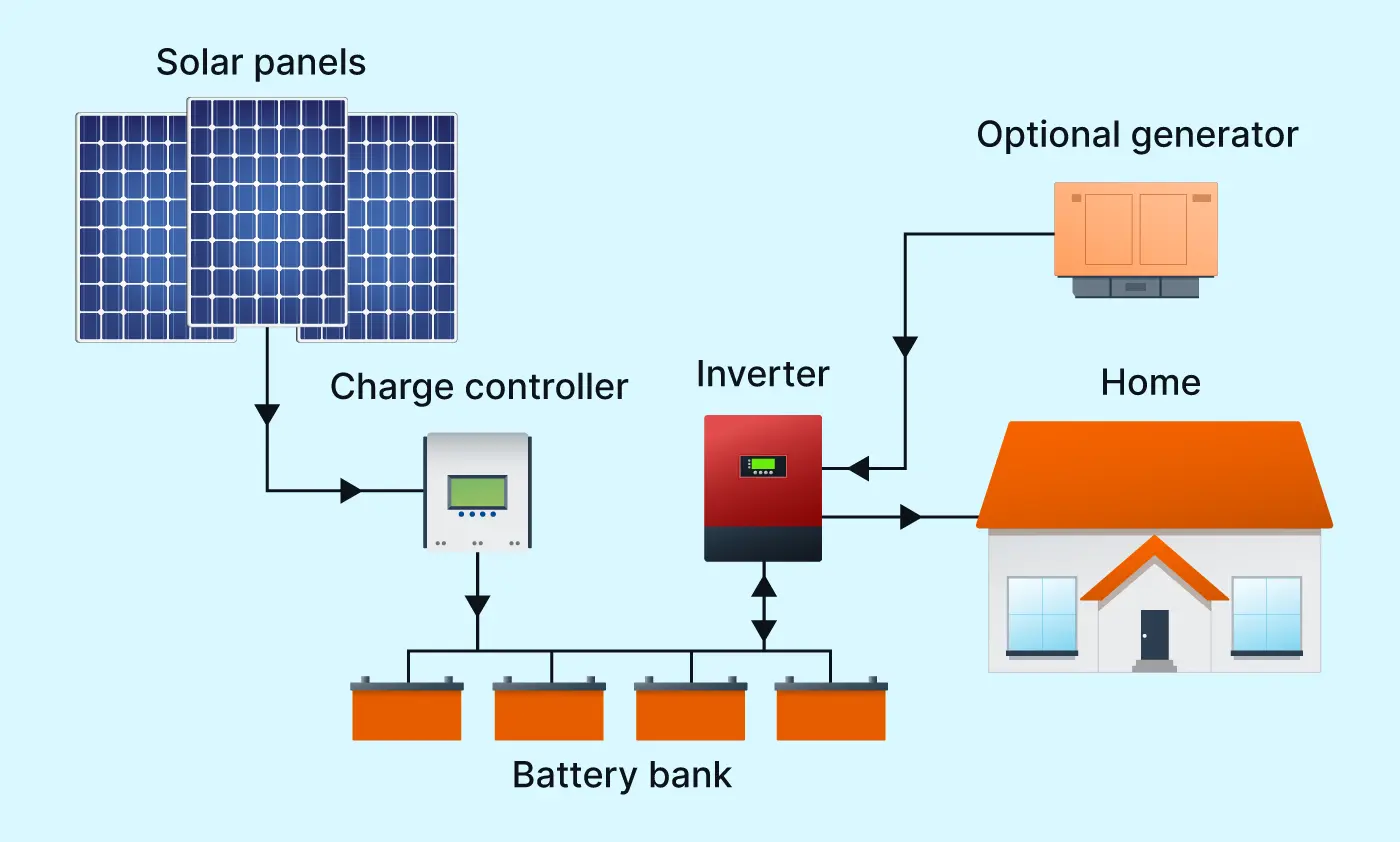
Source: Medium
We recommend using batteries to get the most out of your solar system.
- They can store excess energy generated during off-peak hours and discharge it during peak demand, reducing strain on the grid.
- They can quickly respond to fluctuations in grid frequency, switching you to self-consumption.
- Batteries can act as stabilizers, helping you maintain acceptable voltage and amperage in your system, ensuring the excellent health of your appliances.
Batteries are great for solar optimization because they provide backup power during grid outages, ensuring uninterrupted electricity supply for homes and businesses. Additionally, they offer cost-saving benefits by allowing you to store energy for use during peak evening hours.
Wrapping Up
The long-term benefits of going solar make it a worthwhile consideration. To make it even more profitable, use solar monitoring tools to understand your energy consumption and optimize system performance to achieve the most.
Remember, the journey doesn’t end with installation. It’s crucial to constantly monitor the constantly changing performance ratio of your system. That way, you can ensure its optimal efficiency in the long run.
Ready to take the next step? Get a free solar quote and explore how solar energy can benefit you.
Frequently Asked Questions
How do I monitor my solar panels?
Use inverter display to collect real-time data like power generation, system status, and potential error messages. Check your solar app if you have a more advanced system with panel monitoring kits. Some utility companies provide smart meter solar monitoring tools to track energy production.
How to monitor solar panel output?
If you have a basic system, use traditional solar monitor tools like an inverter display and smart meter from the utility provider. Collect measurements daily and write them into a spreadsheet. You can visualize this data on a chart. More advanced solar monitoring systems usually collect and visualize data for you.
What are the most efficient energy optimization tips?
Optimize heating and cooling, use energy-efficient appliances, and upgrade to LED lighting. Use smart thermostats and wash clothes in cold water, if possible. Use solar batteries to harness excessive green energy throughout the day and use it at night.
What does PV clean cycle optimization?
It’s the situation when the panel owner finds the middle ground between maximizing energy production and minimizing cleaning costs. Determine when shading from branches, debris, and dust reaches the point that they start to impact panel efficiency. Clean panels right before they begin to impact system productivity. Usually, it is enough to clean panels every 2-4 months and after severe weather events.
What is a solar power monitor?
It’s a system that is designed to keep track of the energy production of your solar system. It also helps you to optimize the system’s performance and identify potential issues before they become too obvious and dangerous.

